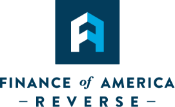
Explore Options
Second Mortgages and Refinancing
Looking to access the additional accrued equity in your home? Want to take advantage of lower interest rates? A HECM-to-HECM Refinance and Second Mortgage from FAR could be right for you.


Do more with the mortgage you already have with HomeSafe Second.
Searching for additional opportunities to leverage your home’s equity? A HomeSafe Second is designed for borrowers who are currently happy with their current mortgage but are looking for a loan that doesn’t add to their monthly payment obligations.
How HomeSafe Second can help.
Refinancing your Reverse Mortgage
A refinance gives homeowners who have already obtained a reverse mortgage the opportunity to refinance their loan into a new loan.
For homeowners who have seen their homes significantly appreciate in value, refinancing is a way to gain access to that additional equity.
Depending on your situation, you may be able to take advantage of lower interest rates.
Additionally, a reverse mortgage refinance could give borrowers the option to add additional borrowers to the loan.

Frequently Asked Questions
Still not sure about something? Click below to get quick answers on some of our most frequently asked questions.
What is a reverse mortgage?
A reverse mortgage is a loan that enables homeowners and homebuyers age 55* or older to convert some of their home equity into cash or a line of credit. Some loans also let homeowners finance a new home purchase. With a reverse mortgage, you make no loan payments†. You continue to live in and own your home.
Unlike a traditional home equity loan or home equity line of credit (HELOC), you don’t have to repay a reverse mortgage until the home is sold** or the last surviving borrower (or a non-borrowing spouse who meets certain requirements) no longer lives in the home. The homeowners must maintain the condition of the home and stay current with property taxes and hazard insurance.
*For certain HomeSafe® products only, excluding Massachusetts, New York, and Washington, where the minimum age is 60, and North Carolina, Texas, and Utah, where the minimum age is 62.
What are the costs associated with a reverse mortgage?
Up-front costs may include a property appraisal fee, origination fee, closing costs, mortgage insurance premium, a modest charge for HECM counseling (if applicable), and a servicing fee. You can roll most of the up-front costs into the loan to minimize out-of-pocket expenses. While closing costs vary based upon the type and size of the loan, they’re similar to those for any traditional mortgage. During the life of the loan, interest and a monthly insurance premium accrue. An FAR Reverse Mortgage Specialist will give you a detailed breakdown of the up-front costs and loan expenses.
When do I have to pay back the loan?
You do not have to make principal and interest payments as long as the home remains your primary residence. As long as you meet the loan terms, you do not have to repay a reverse mortgage until the home is sold or the last surviving borrower (or a non-borrowing spouse who meets certain requirements) no longer lives in the home as their primary residence.
Am I spending my children’s inheritance?
A reverse mortgage may help you maintain a quality standard of living throughout your retirement years. Because a reverse mortgage is a tough decision that may affect other family members, we encourage you to involve them in your decision process.
When the home is sold or is no longer your primary residence, it’s time to repay the loan. After the loan is paid off, any remaining equity belongs to you or your estate and can be transferred to heirs.











